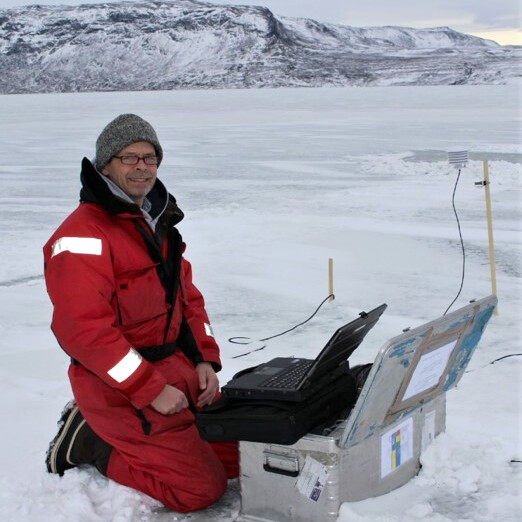Environmental drivers of Arctic communities based on metabarcoding of marine sediment eDNA
[Published 24 January 2024]
Scientific Publications
Abstract
Our ability to assess biodiversity at relevant spatial and temporal scales for informing management is of increasing importance given this is foundational to identify and mitigate the impacts of global change. Collecting baseline information and tracking ecological changes are particularly important for areas experiencing rapid changes and representing data gaps such as Arctic marine ecosystems. Environmental DNA has the potential to provide such data. We extracted environmental DNA from 90 surface sediment samples to assess eukaryote diversity around Greenland and Svalbard using two separate primer pairs amplifying different sections of the 18S rRNA gene. We detected 27 different phyla and 99 different orders and found that temperature and the change in temperature explained the most variation in the community in a single linear model, while latitude, sea ice cover and change in temperature explained the most variation in the community when assessed by individual non-linear models. We identified potential indicator taxa for Arctic climate change, including a terebellid annelid worm. In conclusion, our study demonstrates that environmental DNA offers a feasible method to assess biodiversity and identifies warming as a key driver of differences in biodiversity across these remote ecosystems.
FACE-IT Scientists:
Dorte KRAUSE-JENSEN
Aarhus University, Department of Bioscience, Denmark
Aarhus University, Arctic Research Center, Denmark
AU personal page
ORCID
Role in FACE-IT:
• Researcher "Ecosystem Function Changes"
Mikael K. SEJR
Arctic Research Centre, Aquatic Biology, Department of Biology, Denmark
AU personal page
Role in FACE-IT:
• Researcher "Biodiversity Changes"
Lars Chresten LUND-HANSEN
Arctic Research Centre, Aquatic Biology, Department of Biology, Denmark
Lars’ FACE-IT Projects
Role in FACE-IT:
• Leader "Ecosystem Function Changes"



